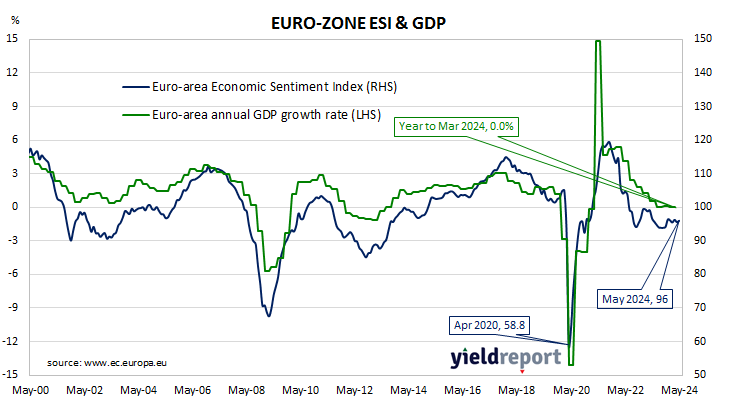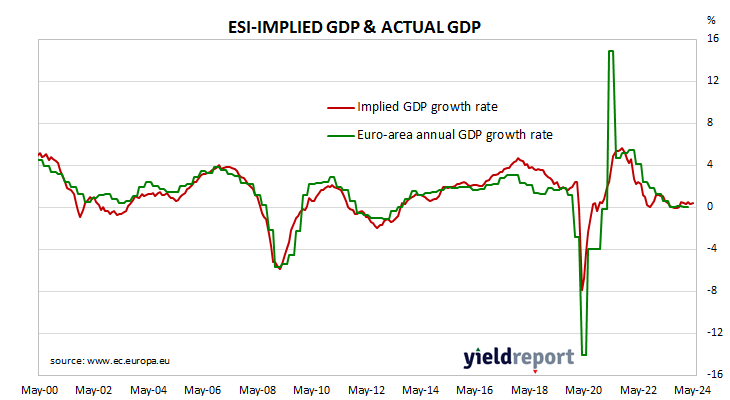Summary: Euro-zone composite sentiment indicator up modestly in May, almost in line with expectations; readings up in three of five sectors; up in three of four largest euro-zone economies; German, French 10-year yields fall moderately; index implies annual GDP growth rate of 0.4%..
The European Commission’s Economic Sentiment Indicator (ESI) is a composite index comprising five differently weighted sectoral confidence indicators. It is heavily weighted towards confidence surveys from the business sector, with the consumer confidence sub-index only accounting for 20% of the ESI. However, it has a good relationship with euro-zone GDP growth rates, although not necessarily as a leading indicator.
According to the latest survey taken by the European Commission, confidence has improved on average across the various sectors of the euro-zone economy in May. The ESI posted a reading of 96.0, almost in line with expectations, but up modestly from April’s revised reading of 95.6. The average reading since 1985 is just under 100.
“The data affirm that the euro area economy is gradually recovering from structural shocks of the past few years,” said ANZ economist Jack Chambers. “A gradual stabilisation against a backdrop of broad-based disinflation will provide the policymakers confidence to cut rates at the ECB’s meeting next week.”
Long-term German and French 10-year bond yields both fell moderately on the day. By the close of business, the German 10-year yield had shed 3bps to 2.66% while the French 10-year yield finished 4bps lower at 3.15%.
Confidence improved in three of the five sectors of the euro-zone economy. On a geographical basis, the ESI increased in three of four of the euro-zone’s largest economies.
End-of-quarter ESI readings and annual euro-zone GDP growth rates are highly correlated. This latest reading corresponds to a year-to-May GDP growth rate of 0.4%, down from April’s implied growth rate of 0.3%.



